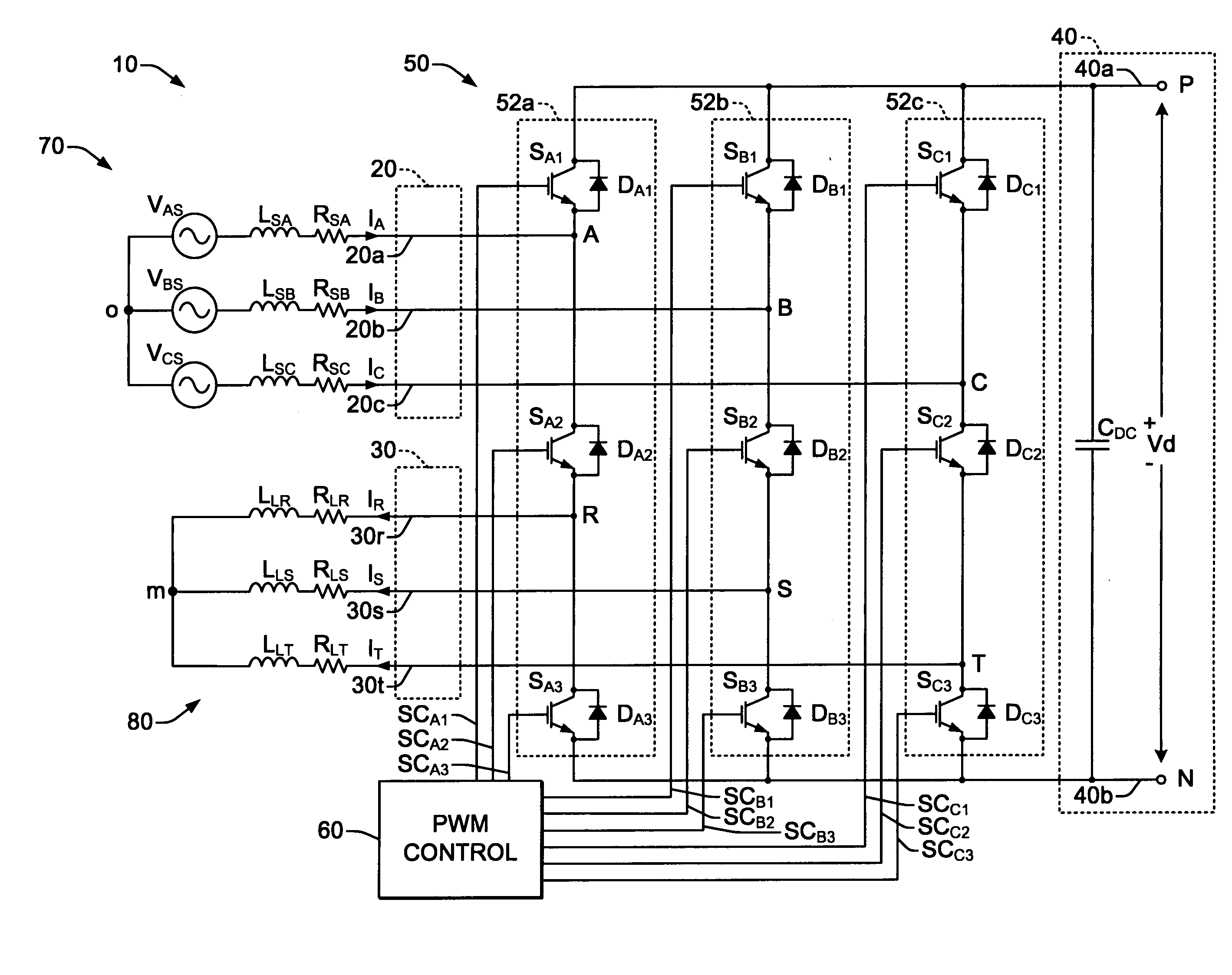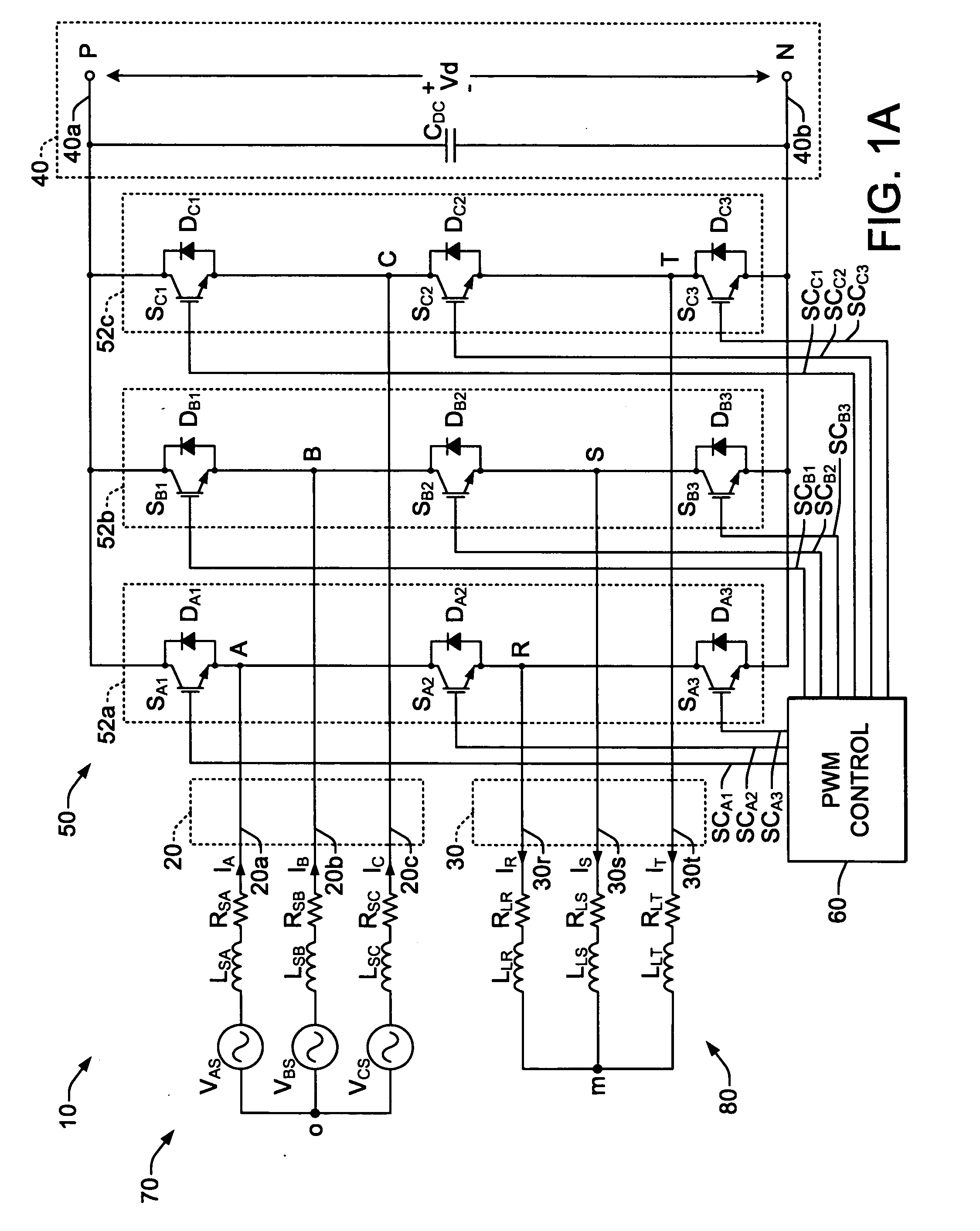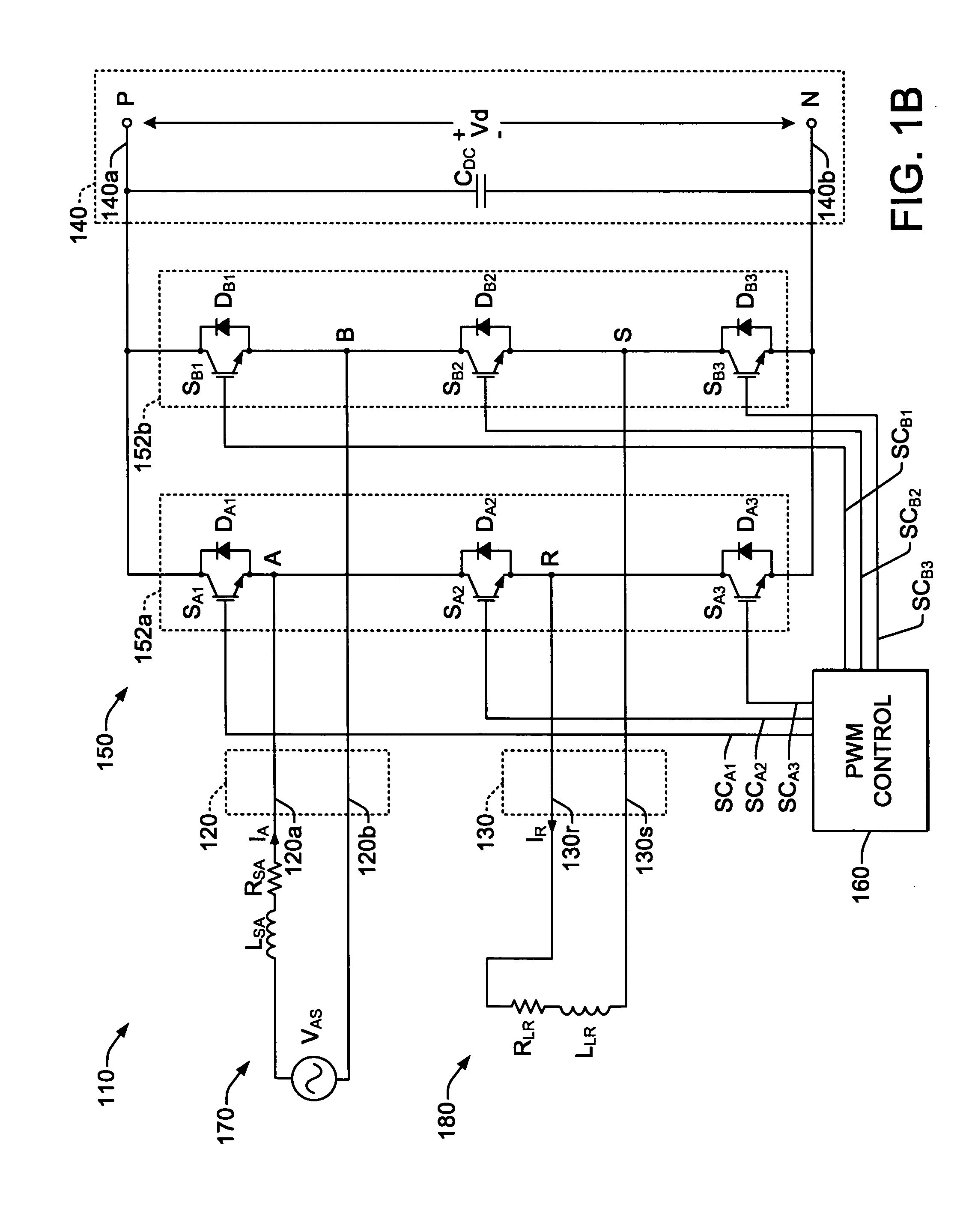Nine device AC-to-AC converter
a technology of ac-to-ac converter and nine devices, which is applied in the direction of power conversion system, ac-ac conversion, and conversion with intermediate conversion to dc, can solve the problem of lower energy efficiency of conventional two-stage converters than single-stage conversions
- Summary
- Abstract
- Description
- Claims
- Application Information
AI Technical Summary
Benefits of technology
Problems solved by technology
Method used
Image
Examples
Embodiment Construction
[0029] Referring now to the figures, several embodiments or implementations of the present invention are hereinafter described in conjunction with the drawings, wherein like reference numerals are used to refer to like elements throughout, FIG. 1A shows an exemplary nine-device AC-to-AC power conversion system or power converter 10 in accordance with one or more aspects of the invention. The system 10 includes a three-phase AC input connection or circuit 20 with AC input terminals 20a, 20b, and 20c (terminals A, B, and C) for receiving three-phase AC electrical input power from a three-phase input source 70, along with a three-phase AC output connection or circuit 30 with output terminals 30a, 30b, and 30c (R, S, and T) for providing three-phase AC electrical output power to a three-phase load 80, and a DC circuit 40 comprising terminals 40a and 40b (P and N) and an energy storage component, such as a DC capacitor CDC. In the illustrated example, the input source 70 is shown schemat...
PUM
 Login to View More
Login to View More Abstract
Description
Claims
Application Information
 Login to View More
Login to View More - R&D
- Intellectual Property
- Life Sciences
- Materials
- Tech Scout
- Unparalleled Data Quality
- Higher Quality Content
- 60% Fewer Hallucinations
Browse by: Latest US Patents, China's latest patents, Technical Efficacy Thesaurus, Application Domain, Technology Topic, Popular Technical Reports.
© 2025 PatSnap. All rights reserved.Legal|Privacy policy|Modern Slavery Act Transparency Statement|Sitemap|About US| Contact US: help@patsnap.com



